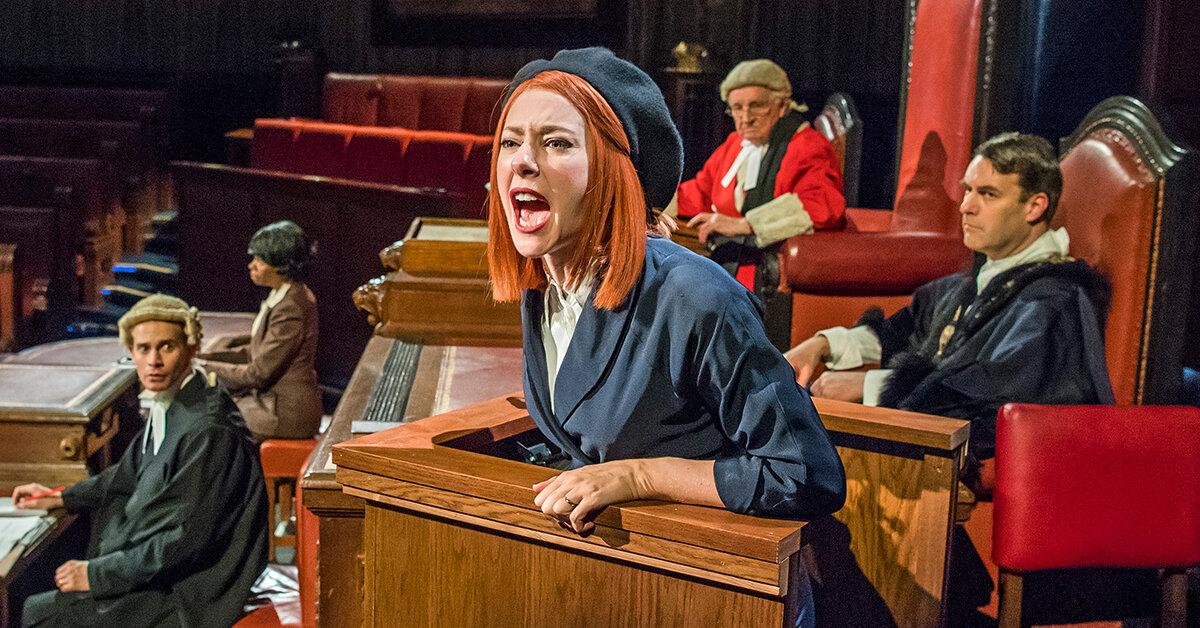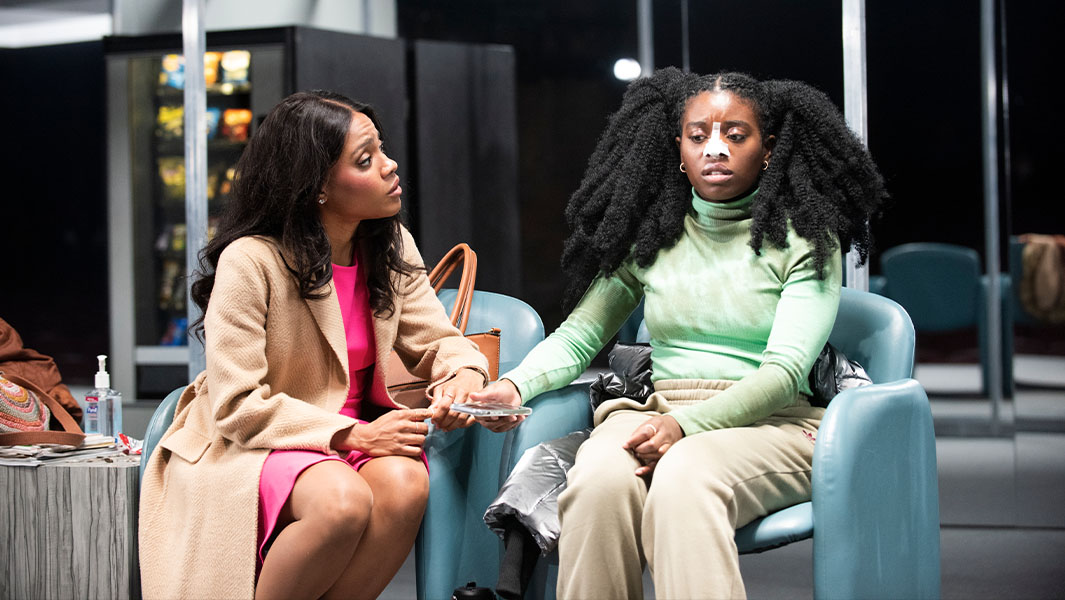
A 1940s Radio Christmas Carol (US/UK), the holiday sequel to the popular WWII musical The 1940’s Radio Hour (US), takes us backstage at a radio program and into the mind of a war-torn nation with jazzed-up carols, original songs, dancing, and funny commercials. Below, check out some thoughts on the show’s development and success with Walt Jones (Book), David Wohl (Composer), and Faye Greenberg (Lyrics).
_
What first inspired you to write A 1940s Radio Christmas Carol? What were the stages of its creation?
Walt Jones: Because the first The 1940s Radio Hour enjoyed such a great success, I wanted to write a sequel that would take the Feddington Players a year into their future, when the thoughts of WWII had become a little sadder because a longer conflict than originally hoped for seemed likely. W.O.V. felt some belt tightening and had to move from Manhattan to Newark where the studio looked a little less classy, and many in the cast had been replaced by talent a little less expensive. And, the coming of television is mentioned, laughed off by the announcer and cast as a non-starter. Ironically, television killed radio and in a few years, the Feddington Players with it. The assorted radio cast of characters gives us many moments of unexpected humor, touching camaraderie, and, towards the end, a blossoming of love.
David Wohl: Walt Jones, the creator of both The 1940s Radio Hour and A 1940s Radio Christmas Carol, originally approached me to write jazz arrangements of Christmas carols for the cast to perform at the end of the original non-musical play– as a sort of mini-concert. I suggested that he consider sprinkling carols throughout the play, in order to make the show feel more like a musical. Thinking about it some more, I then asked Walt to consider having an original song to be written specifically for the show. Walt liked both ideas, and I got to work on both the carols and the original song. At a certain point, I felt that the show needed a ‘ringer’ lyricist to improve the original song and to complete it more quickly. Happily, lyricist Faye Greenberg accepted my invitation to come on board. Faye really understood the era and the feel of the show, and she has a gift for playful and clever lyrics that are always fun to listen to, and are emotionally authentic. Walt liked the song we wrote so much (the ballad, “Quiet Night”) that he asked us to write two additional songs for the original production, and then one more (a fourth) for the final published version of the show. Each of the three additional songs has its own quirky charm, and a title to match: “That Cute Little Elf (Second One from the Right),” “Newark” (Faye’s favorite, a tongue-in-cheek ode to the eponymous city), and “A Coconut Christmas.” Music went from being an add-on to the book (script) to an integral component of the storytelling of A 1940s Radio Christmas Carol. The curtain call music is a Dixieland mouth-brass version of “Deck the Halls.” The cast and audience really enjoy ending on that high note!
Faye Greenberg: David and I had already collaborated on a number of songs and had been looking for something more substantial to work on and I was a huge fan of The 1940’s Radio Hour so I jumped at the opportunity to collaborate with Walt and David. I was excited to write period songs. It’s always fun to research and then play with the vernacular of the day, and Walt had created a whole world that instantly came to life when I read the piece. Strong, well written characters make my job easier. Walt gave me that gift. So does having an accomplished, versatile composer. David was (and is) a generous collaborator. Full of creative suggestions that were always in the service of the song. That doesn’t always happen. I don’t think we were ever in the same state, let alone the same room during the writing of the show, but he was always available on the phone or the computer to fine tune whatever we were working on. Walt, too. It was a thoroughly enjoyable, stress-free collaboration.
What has surprised you about the responses to the show, by theaters and audiences?
Faye Greenberg: I love watching the younger audiences as they discover what “radio” used to be: an event. The generation coming up now thinks television is ancient history. Radio doesn’t even register. They’re accustomed to Podcasts and streaming entertainment on their phones and it’s often a solitary experience. The idea of family and friends gathering around the radio is inconceivable.
A 1940s Radio Christmas Carol has enjoyed widespread success. What do you think is the show’s enduring appeal?
We are delighted that A 1940s Radio Christmas Carol has been performed in over 80 theaters in the U.S., Canada, and U.K. Audiences are looking for simpler times, and they still dream of what is possible. Reviewers have regularly remarked that the show appeals to audiences of all ages and generations, because its themes of friendship, love, and family are timeless and touch all of us. The various storylines also take place within a very funny, moving, and madcap context of the W.O.V. radio “family.” Audiences have also enjoyed the sound effects, tuneful original songs and jazz arrangements of familiar carols, and getting “behind the scenes” of a radio show. Lastly, the show takes place in 1943, and so the back drop of World War II and its personal implications for the radio company and its listening audience, adds poignancy to the show.
–
To purchase your copy of A 1940s Radio Christmas Carol, visit the US or UK website. For performance rights, visit the US or UK website.
Header Image: A 2008 production of A 1940s Radio Christmas Carol (William A. Cotton).

Agatha Christie’s Witness for the Prosecution: Meet the Characters

The Glad Game – In Remembrance of Phoebe Frances Brown

